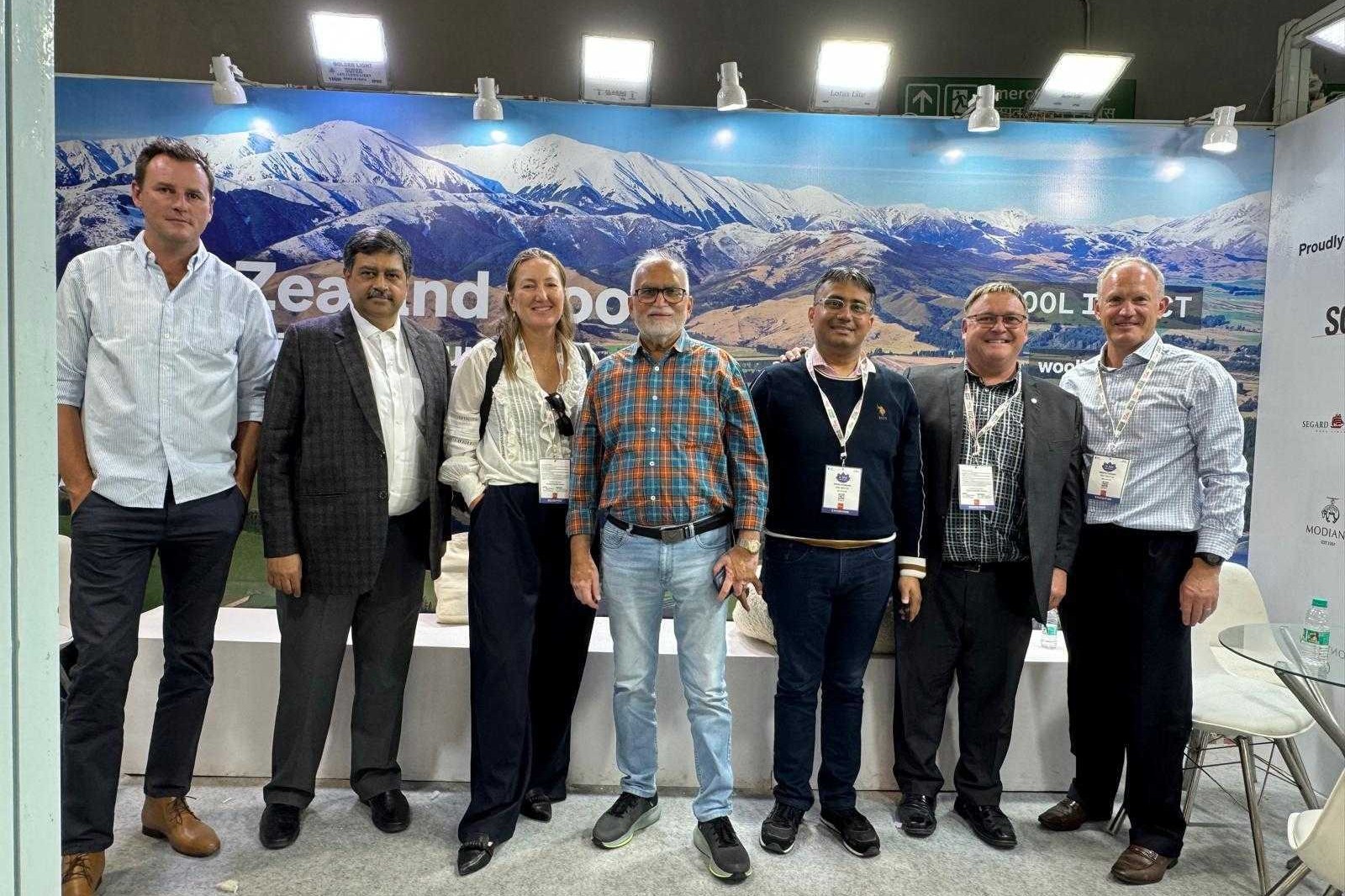Andrew Swallow
If Harry Potter author J K Rowling were a soil scientist, she might have cast Ants Roberts as her ‘Defence against the Dark Arts’ master.

Roberts is the winner of the New Zealand Grassland Association’s Ray Brougham Trophy. It entitles the winner to to give a national lecture tour. Roberts has used his to slay several sacred cows of pseudo-science that have beguiled a good few farmers over the years. He called his talk, ‘Soil fertility finangling: a curmudgeon’s view’.
Claims about base cation saturation ratio (BCSR) – also known as the ‘Albrecht’ or Kinsey approach – humates, fine particle fertilisers and fertiliser acidification of soil were systematically put to the sword by Roberts with references to published papers from reliable scientific journals.
Roberts said BCSR in particular “has a lot of uptake around the world” yet the research on which it is based was flawed.how Bear et al, in 1945, published a paper listing ideal saturation ratios for various cations.
“No-one has managed to figure out how the authors came up with those ratios.”
‘I can’t see adding 20-30kg [as humate] is going to do anything at all for soil function.’
William Albrecht subsequently adopted the ratio concept and, in 1975, published papers [The Albrecht Papers. Volume 1: Foundation concepts. Acres, US, Kansas City] apparently showing its efficacy.
However, Roberts said the trials, which were conducted in pots, were compromised by pH changes due to adding lime (calcium carbonate) to change the cation ratios.
“Albrecht proved calcium was genuinely deficient for many US crops mainly due to a change in fertiliser from superphosphate to MAP and DAP after WWII,” acknowledged Roberts, however, benefits seen were “more about [correcting] soil acidity than a perfect ratio of cations.”
Albrecht’s pot trial results could not be replicated in the field by Albrecht’s own PhD student (McLean & O’Connell, 1972) and in 1981 Eckert & McLean published a paper in the Journal of Agronomy concluding there was no ideal BCSR, as did Koppittke & Menzies in a 2007 review paper.
Earlier in his presentation, Roberts’ latched on to one of the latest buzz-words of the alternative agriculture movement: regenerative.
“It sort of suggests to me that what we’re practicing is degenerative agriculture, which offends me a little bit.”
Regenerative agriculture’s aims to revitalise the soil and environment to produce high quality, nutrient dense food while improving land leading to productive farms and healthy communities are laudable aims which we all want, he said.
The problem comes when regenerative advocates slam practices such as use of soluble fertilisers as ‘one of the most disruptive practices in modern agriculture’, Roberts said, citing a recent column from a local paper.
“He’s using the term disruptive in a negative sense when I would say it is disruptive in a very positive sense!”
Roberts said claims that superphosphate fertiliser acidifies soil, is rapidly locked up, works against soil microbial activity and compromises creation of humus are not supported by the published science.
Acidification of soil is a natural result of plants growing in soils as they excrete organic acids, and nitrogen cycling through the soil/plant /animal system. Some fertilisers, such as urea, ammonium and sulphur-based fertilisers do acidify soil, but not superphosphate, as data from 37 years’ records from irrigated pasture at Winchmore, Canterbury, shows.
The same trial also demonstrates the consistent, long-term response to maintaining an appropriate Olsen P level, maintenance phosphate fertiliser applications of 188kg/ha/year significantly out-yielding untreated year in, year out.
Some of the phosphate from fertiliser applications does get bound to soil, but that’s a good thing to reduce risk of loss, and as plants extract phosphate from the soluble pool, bound phosphate is released so more is available.
Some of the longest running agricultural trials in the world, at Rothamsted Research Station in the United Kingdom, show that long-term, maintaining the soil Olsen P level by replacing harvest removals leads to 95% efficiency of applied P (Syers et al, review paper, 2010 World Congress of Soil Science).
As for fertiliser working against microbial activity and creation of humus or soil organic matter, numerous studies such as Fraser et al’s 1994 study of the Winchmore irrigated pasture trial have shown the opposite is true: as pasture production increases in response to fertiliser, so does soil microbial activity and organic matter content.
Roberts said what does drop soil microbial activity is cropping, but that’s associated with cultivation, not fertiliser use,
“I reckon that’s where a lot of this regenerative agriculture stuff comes from: continuous cropping systems overseas where you pound the soil to hell, lose the soil organic matter and all these problems start piling in on you.”
Super feeds not kills
Claims super slaughters earthworms were similarly scotched by Roberts citing research by Sears et al in 1953 and Schon et al in 2006.
“Just as [with fertiliser] you’re providing more tucker for the animals that graze that pasture, you’re providing way more tucker [as dead leaves, dung and root turnover] for everything that lives in the soil.”
As for humates, Roberts said the benefits those selling them claim are simply the benefits of soil organic matter, of which there is already 30-60 tonnes in even the semi-arid brown-grey soils of Central Otago, and up to 300t in the most fertile North Island soils.
“I can’t see adding 20-30kg [as humate] is going to do anything at all for soil function.”
Those pastoral farmers calling to be credited for building soil carbon should be careful what they wish for, he added, warning what goes up can come down, so credits could become a liability. “You would have to show year-on-year increases.”
Fine particle fertiliser claims by the likes of www.fpanz.com – double or triple the response to conventional granular fertilisers, better soil condition and biological activity, halved leaching, 38% better water use efficiency and 14% reduced emissions – were also challenged.
For example, Korte et al (1996) had shown solid DAP was just as effective as DAP slurry – effectively a fine particle application. Fine lime does work faster than regular ag-lime, he acknowledged, but claims the same lift in soil pH can be achieved with a tenth of the rate were rubbished.
“No way are you going to get the same pH change for the same duration of time,” he said, citing Craighead’s 2005 NZ Grassland Association paper.
Similarly, fine particle urea had been shown by Muir et al (2006) to be no more effective than granular urea, and Morton et al’s just released NZJAR review paper of pasture responses to fine particle fertiliser concludes there isn’t enough experimental evidence to show any agronomic advantage.
Roberts added that fine particle fertiliser often has gibberellic acid added to it so care is needed to make sure comparisons with granular fertiliser are “comparing apples with apples.”
The cost-effectiveness of the less-soluble forms of phosphate, reverted superphosphate and dicalcic superphosphate, was also questioned.
“Lime and super dry-blends cost less and give you the same response.”
Only in extreme wet, such as on the South Island’s West Coast, might there be a benefit, or when used for the purpose they were originally designed for: sowing with seed to prevent fertiliser burn of seed from the fertiliser.
Roberts’ final plea was for producers not to “throw the baby out with the bathwater”.
“Please, please, please get the basics right first based on conventional science to achieve and maintain optimum productivity for your system.
After that you can spend whatever’s left of your disposable income on whatever you bloody like!”
Key points
No reliable science to support BCSR (Albrecht system).
Sound fertiliser practice beneficial for bugs and worms.
Reverted super? Regular super plus lime does same job cheaper.
Fine particle fertiliser no better than regular.
Humates an expensive ‘drop-in-the-ocean’ of soil organic matter.
- Full talk: go to www.grassland.org.nz – click on YouTube channel.




